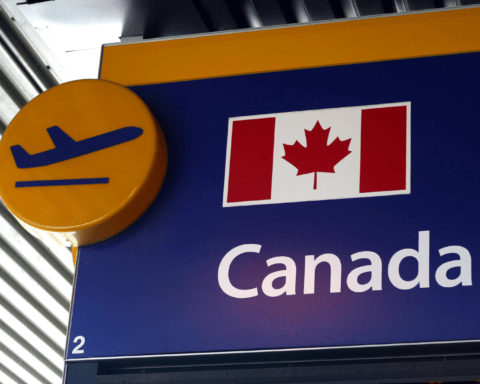When Filipino immigrant Edwin Nodora first landed in Vancouver, his future seemed promising. The value of Canadian currency was high as compared to the Philippine Peso (PhP). After getting employed at a mall, Nodora was excited about the prospect of saving enough money to support his family back home.
But this dream may no longer be a reality now that the Canadian currency has fallen to its lowest levels in 11 years.
Over the last 10 years, more than 400,000 Filipinos migrated to Canada to seek greener pastures and to provide better economic security for their children and their children’s children. But this future is threatened, now that the Canadian dollar has dropped from CAD 1.00: PhP 43.00 in 2011 to CAD 1.00: PhP 35.00 today.
The effect on Filipino immigrants
For most immigrants to Canada, life will need to face financial adjustments. For Nodora, an engineer who is celebrating his fourth year in Vancouver, the Canadian dollar devaluation adversely affected the Filipino immigrants’ remittances to the Philippines.
He said that for most Filipinos, they felt upset because the value of the Canadian-dollar remittances sent to their relatives in the Philippines has decreased. As a result, the fruits of their labour will be comparatively little help to their families back home.
“It is part of our culture to help our less fortunate relatives in the Philippines, so sending money to them is always part of the Filipino spirit,” Nodora said. “[Now] the money we send them will have less impact on improving their quality of life.”
“Devaluation did not stop immigrants from coming to Canada.”
The Vancouver Sun reported that Canada is one of the world’s greatest source of remittances and that the country remains a major source of remittances for the Philippines, totalling around $2 billion CAD a year.
The same sentiment was also shared by Filipino immigrant Joy Uy who has worked as a nurse in Saskatchewan after arriving in the province in 2011.
Uy explained that she was upset with the recent devaluation of the Canadian dollar, but remained hopeful that the currency will bounce back sometime next year. Despite the Canadian dollar devaluation, she said she is still witnessing increasing number of Filipino immigrants landing in Saskatchewan almost every week.
“This only shows that the devaluation did not stop immigrants from coming to Canada,” Joy added.
Canadian statistics show that Canada received 40,035 landed Filipino immigrants in 2014, increasing by around 30 per cent from 2013 when 29,545 Filipino immigrants arrived. Filipinos remain one of the the largest foreign-born groups in Canada since 2011, despite the struggling Canadian currency.
Hotel executive and Filipino immigrant Evelyn Yadao has been a resident of Vancouver for more than 20 years. She resigned from her Vancouver work in 2013 to volunteer in the Southern Philippines in her hometown of Zamboanga to help in the post-war rehabilitation.
During the war, 400 separatist rebels had stormed the city, causing the displacement of more than 100,000 locals including children.
After two months of humanitarian work in the Philippines, she flew back to Canada and immediately found a higher paying hotel executive job in Victoria, BC. She claimed that this kind of opportunity was what made Canada different from her hometown.
Even though she was in her early 50s, she was able to start a brand new career — an opportunity she doubts she would have been able to find back home.
Yadao claims that despite the Canadian dollar devaluation, the other benefits of coming to the country will still outweigh any monetary challenges. She is confident that more prospective Filipino immigrants will land in Canada and is preparing to launch her immigration consultancy business in BC as well as a sister branch office in the Philippines that will cater to Filipino students and professionals who wish to land in Canada.
The other side of the coin
On the contrary, for some Filipinos planning to migrate to Canada, the maple leaf state is no longer a viable destination. Instead, potential immigrants are choosing to work in countries where their dollar goes farther.
Abdul Naing, who works as a hotel staff in Brunei, said he had planned to apply as immigrant to Canada as a skilled worker after his working contract expired in early September this year. However, after learning of the devaluation of the Canadian dollar, he dropped his application, choosing instead to renew his contract with his Brunei employment for another two years.
A Brunei dollar currency is equivalent to PhP 35.00 when converted. In addition to his salary, Naing gets free food and accommodation from his company. As such, his earnings can all be set aside for savings, since almost everything is provided for in Brunei. According to Naing, these are advantages he could not avail of if he migrated to Canada.
For some Filipinos planning to migrate to Canada, the maple leaf state is no longer a viable destination.
Australia has also become an alternative destination for Filipino immigrants. Newly-landed Filipino immigrant Rafael Oclarit told New Canadian Media that upon hearing of the Canadian currency devaluation, many Filipinos like himself are choosing to take a chance in Australia instead.
“The minimum wage here is AUS 17.00 per hour and winter is not that bad,” Oclarit added. There are now more than 225,000 Filipinos who have chosen Australia as their new home and the number continues to rise.
Not only does Australia have a fairly stable economy but the distance to the Philippines is only 8 hours compared to the 15-hour flight time from Vancouver to Manila.
While for some, the Canadian currency devaluation may pose too great of a challenge for many Filipino immigrants and their relatives back home, many determined Filipino immigrants believe their bright future still lies in Canada.
For those who’ve waited so long to migrate to Canada, the current dip in the dollar is just a hurdle to be overcome on their way to creating a new life for themselves and their families.




